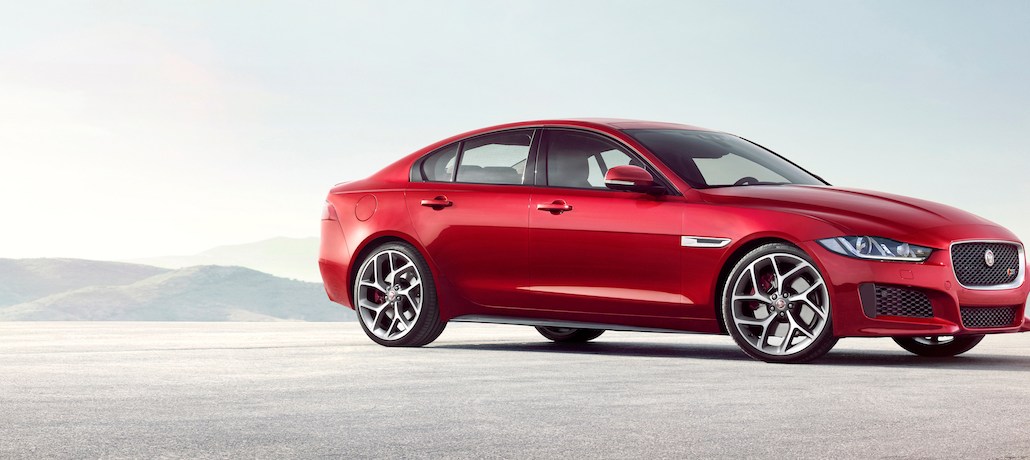
This week, Jaguar debuted its “New Generation of Jaguar” campaign designed to promote the carmaker’s new XE compact luxury sedan and F-PACE performance SUV, available this spring.
With the campaign spanning TV, display ads, paid social, programmatic and native ads, Jaguar is swerving from its longstanding image as a maker of cars affordable by the few. “The No. 1 goal of our campaign today is to let people know that Jaguar is an accessible luxury brand,” said Kim Kyaw, head of digital, social and CRM for Jaguar and Land Rover. She continued that it’s the first time that Jaguar has targeted the generation of 18-34-year-olds with a product that is affordable for this age group.
The campaign kicked off on April 18 with a TV spot titled “Masterplan” starring British actors Tom Hiddleston and Nicholas Hoult. In collaboration with Jaguar’s media buying agency Mindshare, it expanded to digital the next day with homepage takeovers and repurposed “Masterplan” videos on premium publisher sites including those of The New York Times, ESPN, Quartz, Rolling Stone and Time Inc. Those may be followed by programmatic, display, social and paid search to ensure the ads reach the right people.
Sometimes you have to improvise #UnleashTheCats #XE #adhttps://t.co/XG5Hui0Euc
— Zach King (@zachking) April 19, 2016
On social media, the team posted promoted content with the hashtag #UnleashTheCats for a 24-hour takeover on Twitter. To interact with young consumers, Jaguar collaborated with influencer Zach King on Twitter and Vine to create two 15-second videos featuring the XE. The company also placed sponsored content on Instagram and Facebook, encouraging followers to share their Jaguar experiences with the hashtag #UnleashTheCats on the platforms. “New Generation of Jaguar” will continue to unfold over the following months with additional digital activations. There will be separate campaigns for the XE and the F-PACE this summer.
Kyaw declined to disclose financial details of the campaign, except to say it probably would be the biggest for the XE and the F-PACE for the year. Jaguar spent around $51.4 million on advertising last year, compared to $86.8 million in 2014, according to Kantar Media.
The XE and the F-PACE are vital to Jaguar as they are likely to help the brand triple its U.S. market share, said Kyaw. The debut of these two models underscores Jaguar’s pivot from luxury to accessible. The brand falls lower in the luxury line as share of shopper interest (derived from consumers researching brands across automotive websites like Car and Driver and Daily News Autos) dropped 12 percent from 2014 to 2015, according to auto marketing company Jumpstart Automotive Group’s most recent Insights Book. “BMW ranks first in all the luxury auto brands we look at, followed by Audi and Mercedes-Benz. In comparison, Jaguar ranks 12th,” said Libby Murad-Patel, vp of strategic insights and analytics for Jumpstart.
Most of the growth in luxury cars comes from SUVs and crossover utility vehicles (CUVs), and it’s hard for Jaguar to compete because its F-PACE is its first SUV, said Murad-Patel. She told Digiday that around 10 percent of F-PACE shoppers are looking at Mercedes-Benz SUVs or CUVs, and Mercedes-Benz has a large line-up of SUVs already.
More in Marketing

What TikTok’s e-commerce launch could mean for marketers and content creators
TikTok has officially launched its new e-commerce platform, TikTok Shop, earlier this month on August 1. Using the new e-commerce platform, brands and creators can sell products directly on the platform, potentially creating new revenue streams, and tap into the short-form video platform’s growing popularity.

‘The influencer industry can be really vile’: Confessions of an influencer marketer on the industry’s unfair hiring practices
While the influencer industry might sound exciting and like it’s full of opportunities, one marketer can vouch for the horrific scenarios that still take place behind the scenes.

Digiday+ Research: Marketers said revenue grew in the last year, with more growth expected ahead
After a tumultuous 12 months, marketers are getting a clear picture of how they really did during a time of true uncertainty. And, as it turns out, it wasn’t all that bad.
Ad position: web_bfu